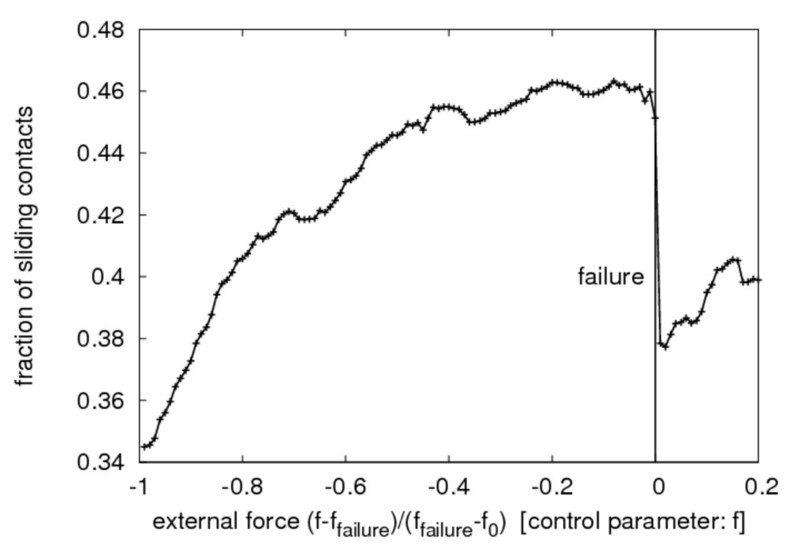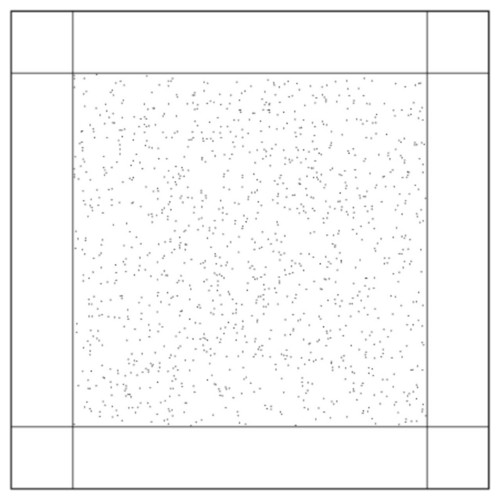Description
The aim of this Project is to deepen our fundamental understanding of the unjamming of granular assemblies (failure) and of brittle material (fracture). The results of this Project will enable one to draw parallels between failure, fracture, phase transitions, and glasses.
Recently published work suggests that failure resembles phase transitions in thermal systems, where a diverging length scale appears. This observation makes our problem interesting from a statistical mechanical perspective. On the other hand, our problem is also of practical interest, for predicting unjamming (failure or fracture) is very important in engineering.
|
We subject systems of particles (sand, stones, ...) to compressive external forces. The result are resilient solids. Changing the external forces very slowly (i.e., quasi-statically), the internal structure of the system changes until it yields or fails at a certain force ffailure. We investigate structural variables that characterize the systems approach of the failure. One of these variables is the number of contacts at which the particles can slide along each other. Their number rises until the failure, and suddenly decreases again when failure appears. Figure (1) shows the average fraction of sliding contacts for simulations with a small number of particles. We showed in What triggers Failure in Frictional Granular Assemblies? that in small systems the failure is always triggered by a contact status change (most frequently either a contact becomes sliding or opens). During the failure, the kinetic energy increases exponentially with the main contribution coming from the force imbalance.
|
The aim of the SFB is the inspection of large systems. As the simulations are very slow (quasi-static), systems with roughly 104 particles must already be considered as large systems. The number of sliding contacts in such systems share many properties with the small systems, but there are also some differences. These differences will be addressed in an article that is under way (2). Figure (2) shows the positions of the sliding contacts for one example of a system at the beginning of the simulation. The black spots indicate the sliding contacts which appear in all parts of the packing. If this behavior will change when approaching the failure is the matter of ongoing research.
In this Project, we subject two different model materials to four different boundary conditions. We expect that unjamming will be preceded by precursors that deform and weaken the material. We will investigate the following questions related to failure and to fracture:
- What is the relation between these precursors, the material, and the boundary conditions?
- Which structural properties are general, and which do only appear in special cases?
- Do the precursors become more and more frequent as unjamming approaches?
- Do spatial correlations diverge with a power law at failure?



